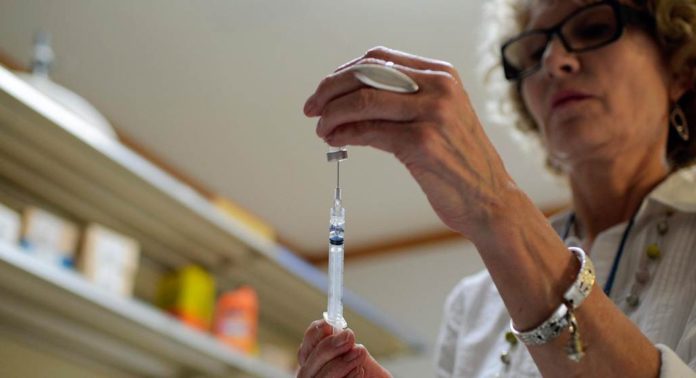
The U.S. measles outbreak continues to grow with an additional 19 confirmed cases in just the last week, bringing the total number of measles cases to 121 since the U.S. Centers for Disease Control and Prevention began tracking the outbreak on Jan. 1.
The outbreak is believed to have begun with a group of unvaccinated people visiting Disneyland in California in December, but it has now spread to 17 states — the latest being Delaware, Michigan and Nevada — according to the CDC. Last week, five babies at an Illinois daycare center were diagnosed with measles, prompting national daycare center chain KinderCare to require all staff members working with newborns to be vaccinated.
Others seem to be moving in that direction, as well. A number of doctors are now turning away patients who refuse to vaccinate (unless, of course, it is for a medical reason) for the safety of other patients, and the University of California announced last week that they would be making the measles vaccine mandatory for incoming students.
Of the first 34 people with measles for whom the California Department of Public Health had vaccination records, only five had received both doses of the measles vaccine, according to the agency. One received just the first dose. Nationally, officials are seeing the same trend, said Dr. Anne Schuchat, who directs the National Center for Immunization and Respiratory Diseases. Some of those 34 cases tracked by California may not be included in the 121 tally by the CDC because they were reported before Jan. 1.
“This is not a problem with the measles vaccine not working,” she said. “This is a problem of the measles vaccine not being used.”
The CDC issued a health advisory on Jan. 23, at which point the virus had only spread to six states beyond California and Mexico. As of Feb. 6, cases had been reported in Arizona, California, Colorado, Illinois, Minnesota, Michigan, Nebraska, New York, Oregon, Pennsylvania, South Dakota, Texas, Utah and Washington, according to the CDC. Since then, New Jersey and Georgia have both reported their first confirmed cases of measles, but those will be counted in next week’s totals.
Measles was eliminated from the country in 2000, but growing numbers of unvaccinated children are allowing the disease to make a comeback. The United States last year reported its highest number of measles cases in two decades, with 644 cases as part of 20 separate outbreaks. The 121 cases in the U.S. reported since Jan. 1 of this year are considered part of one outbreak.
“It’s only January and we have already had a very large number of measles cases — as many cases as we typically have in a [whole] year,” said Dr. Schuchat. This worries me and I want to do everything possible to prevent measles from getting a foothold in the United States and becoming endemic again
Health officials say the measles virus is typically brought into the U.S. unknowingly by travelers from overseas, and then spreads in communities with high rates of under-immunization. As more and more children are withheld from immunizations, the risk of contracting infectious diseases increases for everyone.
That’s because low vaccination coverage compromises “herd immunity” — the community-wide protection that is accomplished when a critical percentage of the population is immunized. For highly contagious diseases like measles, this percentage is around 96% of the population; if the number drops any lower, we lose the protective benefits of herd immunity.
This is particularly important for those who are immunocompromised, too young to be vaccinated, or otherwise medically ineligible for vaccination; these vulnerable groups are also most likely to have severe cases of measles. If immunization rates drop below the critical mass, the risk of disease transmission in the community increases substantially.
“Maintaining high vaccination coverage is very important and it’s the best protection we have against disease outbreaks,” said Dr. Schuchat. “These outbreaks the past couple of years have been much harder to control when the virus reaches communities where numbers of people have not been vaccinated.”
The measles virus is highly contagious and can be transmitted long before symptoms appear. One infected person with the measles can spread it to an average of 18 other people, and it can linger in the air and live on surfaces to spread after an infected person has left a room. The virus is so contagious that 9 out of 10 people who have close contact with a measles patient will become infected themselves, unless they are immune, according to the CDC.
While most people recover, measles can be a very dangerous disease, particularly in young children. Complications include hearing loss, pneumonia and swelling of the brain, according to the CDC. About one or two people out of every 1,000 people infected with the measles die of the virus.
